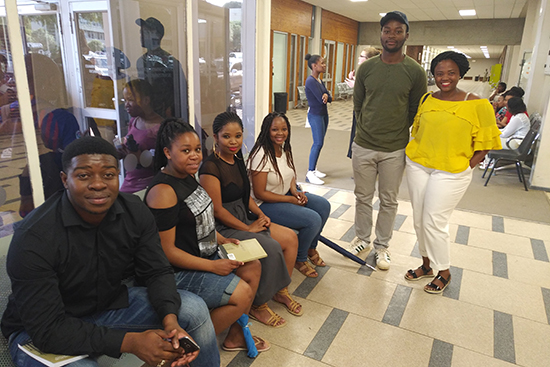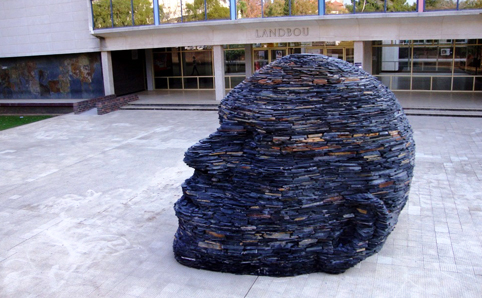Latest News Archive
Please select Category, Year, and then Month to display items
30 October 2018
|
Story Rulanzen Martin
|
Photo Peet van Aardt
 Some of the student writers who contributed to the anthology that tells their stories in Sesotho, isiXhosa, isiZulu, English and Afrikaans.
Some of the student writers who contributed to the anthology that tells their stories in Sesotho, isiXhosa, isiZulu, English and Afrikaans.
How do you transform the higher education curriculum? You involve the exact people the curriculum is intended for. The book, Initiative for Creative African Narratives (iCAN,) illustrates how decolonisation can be achieved through literature for students by students.
iCAN is an initiative by the Centre for Teaching and Learning (CTL) at the University of the Free State (UFS) to mentor students in creative and narrative writing. Under the mentorship of Dr Peet van Aardt, project coordinator, and Ace Moloi, author and UFS alumnus, iCAN Volume 1 was recently launched with 47 short stories written by UFS students.
“The project is a response from the centre for the ever-increasing need for decolonised curricula, steeped in the local cultural perspective of ubuntu,” said Dr Van Aardt.
“This book is an example for how decolonisation can be implemented,” said Prof Francois Stydrom, Senior Director of CTL. The overall aim of the iCAN project is to have the content that materialised from it to be included in the curriculum of first-year students at UFS in the near future.
Book provides multiple voices
Starting in May 2018, CTL presented a series of creative writing workshops on all three of the UFS campuses. “It’s a medium that allows a diverse range of students to express their views and develop their voices as writers,” said Prof Strydom.
It is a form of empowerment, to pass the baton to students to improve the UFS curriculum by writing and publishing their own stories, thereby contributing to larger bodies of knowledge through their lived experiences.
“I believe we as a university need to enable students so that they move away from just being users to becoming contributors to the curriculum,” Dr van Aardt concluded.
Ancient methods used for new sculpture
2012-05-11
 |
|
Angus Taylor sculpture “Van Hier tot Daar”
Photo: Supplied
10 May 2012
|
An Angus Taylor sculpture “Van Hier tot Daar” was installed at the Agricultural Building on the Bloemfontein Campus. The sculpture is a three-metre head (14 times larger than life-size) made out of stacked Marico slate. It weighs approximately 15 tons and took two weeks, after months of preparation, to be built on site. The portrait is generic as Taylor has used various people from his studio as reference.
Ms Angela de Jesus, Curator of the Johannes Stegmann Art Gallery on campus, says the process of stacking stone refers to one of the first methods used by humans to create an object or mark a place of significance in three dimensions. The sculpture speaks not only of man’s evolutionary development, but also of how humans are physically and psychologically connected and interdependent on the land. The sculpture that emerges from the ground, although monumental in scale, becomes somewhat of an anti-monument as it is non-representative and it is without a plinth.
The sculpture is the 16th artwork to be installed on the Bloemfontein Campus by the Lotto Sculpture-on-Campus Project funded by the National Lottery Distribution Trust Fund.